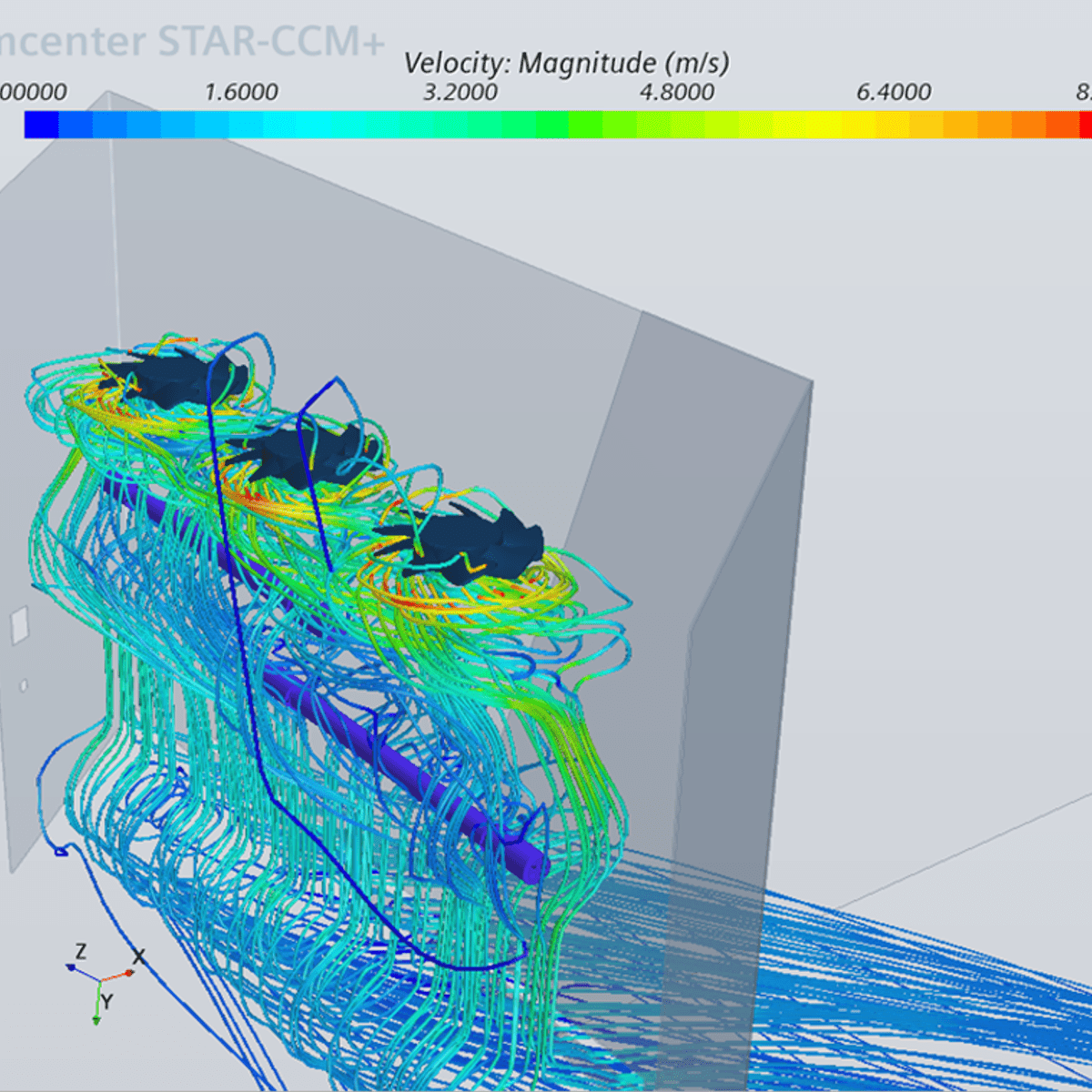
Wenn Sie dies lesen, sind Sie wahrscheinlich daran interessiert, sich in der Simcenter STAR-CCM+ Software oder einem anderen CFD-Tool mit der angewandten numerischen Fluiddynamik (englisch Computational Fluid Dynamics, Abk. CFD) zu beschäftigen. Dieser Kurs kann ein erster Schritt zur Verbesserung Ihrer Arbeitsleistung und zur Förderung Ihrer Karriere oder Ihres Bildungsweges sein.
Read more
Wenn Sie dies lesen, sind Sie wahrscheinlich daran interessiert, sich in der Simcenter STAR-CCM+ Software oder einem anderen CFD-Tool mit der angewandten numerischen Fluiddynamik (englisch Computational Fluid Dynamics, Abk. CFD) zu beschäftigen. Dieser Kurs kann ein erster Schritt zur Verbesserung Ihrer Arbeitsleistung und zur Förderung Ihrer Karriere oder Ihres Bildungsweges sein.
Wenn Sie dies lesen, sind Sie wahrscheinlich daran interessiert, sich in der Simcenter STAR-CCM+ Software oder einem anderen CFD-Tool mit der angewandten numerischen Fluiddynamik (englisch Computational Fluid Dynamics, Abk. CFD) zu beschäftigen. Dieser Kurs kann ein erster Schritt zur Verbesserung Ihrer Arbeitsleistung und zur Förderung Ihrer Karriere oder Ihres Bildungsweges sein.
Wir haben diesen Kurs entwickelt, um Ihnen zu helfen, das Wissen der Strömungsphysik und numerischen Fluiddynamik zu nutzen, um Strömungs- und Wärmeübertragungsprobleme höchst effizient und professionell zu lösen. In diesem Kurs geht es nicht um Anweisungen zur Verwendung einer bestimmten Software. Für alle in diesem Kurs vorgestellten Simulationen wurde ausschließlich Simcenter STAR-CCM+ verwendet. Dennoch wären die Lernergebnisse dieselben, wenn eine andere öffentliche oder kommerzielle Software verwendet würde, solange sie dieselben Funktionen hat.
What's inside
Syllabus
Einführung in die angewandte numerische Fluiddynamik
In Woche 1 untersuchen wir die Strömung in einem Kanal mit einem halbkreisförmigen Hindernis an der Bodenwand. Dabei werden die grundlegenden Strömungsmodelle (Euler-, Navier-Stokes- und Reynolds-gemittelte Navier-Stokes-Gleichungen), die grundlegenden Merkmale der meisten Strömungen in technischen Anwendungen (Grenzschicht, Scherschicht, Strömungsablösung, Rezirkulationszone) und die Ansätze zur Simulation von Strömungen einschließlich dieser Phänomene vorgestellt. Schließlich werden Möglichkeiten zur Steigerung der Simulationseffizienz und zur Schätzung von Diskretisierungsfehlern vorgestellt.
Read more
Syllabus
Good to know
Save this course
Activities
Organisieren und überarbeiten Sie Ihre Kursmaterialien
Show steps
Die Organisation Ihrer Materialien hilft Ihnen, den Überblick zu behalten und die wichtigsten Konzepte hervorzuheben.
Show steps
-
Sammeln Sie alle Ihre Notizen, Folien, Arbeitsblätter und Aufgaben.
-
Ordnen Sie die Materialien nach Themen oder Modulen.
-
Überarbeiten Sie Ihre Notizen und heben Sie wichtige Konzepte und Formeln hervor.
Verwenden Sie Simcenter STAR-CCM+ Tutorials
Show steps
Das Durcharbeiten von Tutorials bietet praktische Erfahrungen mit der in diesem Kurs verwendeten CFD-Software.
Browse courses on
Simcenter STAR-CCM+
Show steps
-
Greifen Sie auf die Simcenter STAR-CCM+ Tutorials auf der Siemens-Website zu.
-
Wählen Sie ein Tutorial aus, das den in diesem Kurs behandelten Konzepten entspricht.
-
Folgen Sie den Schritten im Tutorial und führen Sie die CFD-Simulationen durch.
-
Analysieren Sie die Ergebnisse und vergleichen Sie sie mit den im Tutorial bereitgestellten Erwartungen.
Show all two activities
Organisieren und überarbeiten Sie Ihre Kursmaterialien
Show steps
Die Organisation Ihrer Materialien hilft Ihnen, den Überblick zu behalten und die wichtigsten Konzepte hervorzuheben.
Show steps
- Sammeln Sie alle Ihre Notizen, Folien, Arbeitsblätter und Aufgaben.
- Ordnen Sie die Materialien nach Themen oder Modulen.
- Überarbeiten Sie Ihre Notizen und heben Sie wichtige Konzepte und Formeln hervor.
Verwenden Sie Simcenter STAR-CCM+ Tutorials
Show steps
Das Durcharbeiten von Tutorials bietet praktische Erfahrungen mit der in diesem Kurs verwendeten CFD-Software.
Browse courses on
Simcenter STAR-CCM+
Show steps
- Greifen Sie auf die Simcenter STAR-CCM+ Tutorials auf der Siemens-Website zu.
- Wählen Sie ein Tutorial aus, das den in diesem Kurs behandelten Konzepten entspricht.
- Folgen Sie den Schritten im Tutorial und führen Sie die CFD-Simulationen durch.
- Analysieren Sie die Ergebnisse und vergleichen Sie sie mit den im Tutorial bereitgestellten Erwartungen.
Career center
Computational Fluid Dynamics Engineer
Chemical Engineer
Aerospace Engineer
Mechanical Engineer
Civil Engineer
Environmental Engineer
Petroleum Engineer
Manufacturing Engineer
Industrial Engineer
Materials Engineer
Nuclear Engineer
Robotics Engineer
Systems Engineer
Software Engineer
Mathematician
Reading list
Share
Similar courses
OpenCourser helps millions of learners each year. People visit us to learn workspace skills, ace their exams, and nurture their curiosity.
Our extensive catalog contains over 50,000 courses and twice as many books. Browse by search, by topic, or even by career interests. We'll match you to the right resources quickly.
Find this site helpful? Tell a friend about us.
We're supported by our community of learners. When you purchase or subscribe to courses and programs or purchase books, we may earn a commission from our partners.
Your purchases help us maintain our catalog and keep our servers humming without ads.
Thank you for supporting OpenCourser.



